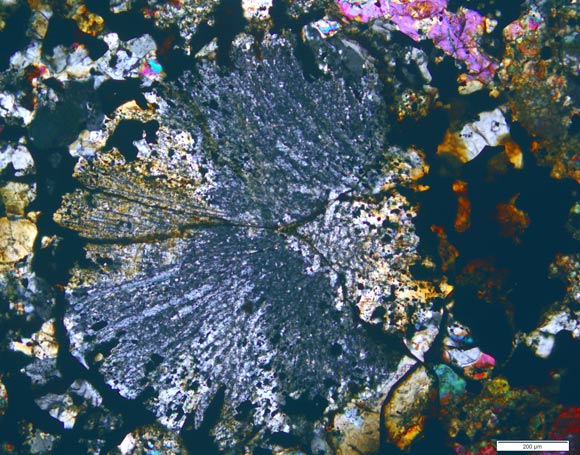Gold Nugget Turns Out To be Four-Billion-Year-Old Meteorite
Four years ago, Australian David Hole was running his metal detector around Maryborough Regional Park near Melbourne when he found a thirty-seven pound rock.
Try as he might, for over four years, Hole was unable to crack the rock using a sledgehammer, acid, a rock saw, a drill, and a grinder. The area he found it was known for gold deposits, and Hole assumed that the rock was hiding gold inside. It was a reddish color and measured about fifteen inches by five and a half inches by five and a half inches, according to Museums Victoria.
Finally, he took the rock to the Melbourne Museum to be identified, which would perhaps give a clue to how to break it. As it turned out, it was no ordinary rock, and it wasn’t gold; it was a four and a half billion year old meteorite that, according to carbon dating, has been sitting in the park from anywhere from one hundred to one thousand years, Science Alert reports.
Dermot Henry, Deputy Director, Sciences, Division of Research and Collections at Museums Victoria, has seen hundreds of rocks brought in by amateur geologists in the hope they were meteorites, and he has had to send the majority of them away for what he calls “meteor-wrongs” according to 10 Daily, but this find got him excited.

It took a diamond saw to get a look inside, but when he sliced off a bit of an end, Henry found that it was an H5 ordinary chondrite meteorite. The reason it is so heavy is because it contains both iron and nickel.
It is called chondrite due to chondrules, crystallized drops of dust or small grains that were in space billions of years ago and attached themselves to the iron and nickel of the rock.
According to Arizona State University Center for Meteorite Studies, about eighty-six percent of meteorites found on earth are chondrite. Henry believes this meteorite, now called the “Maryborough Meteorite,” came from the asteroid belt between Mars and Jupiter, and a collision with another celestial object sent it veering off toward the Earth. ScienceAlert quotes Henry saying, “Meteorites provide the cheapest form of space exploration.
They transport us back in time, providing clues to the age, formation and chemistry of our Solar System, including the Earth.” He goes on to explain that meteorites can provide information about the earth’s interior and the materials that created our planet.
We can learn about the formation of stars and solar systems from ancient, pre-sun stardust. Some meteorites even have amino acids and organic molecules — the materials of life.
Reported in Sci-News.com, Dr. Bill Birch, Curator Emeritus of Geosciences at the Melbourne Museum, noted that a 4.6 billion year old rock has traveled through so many times and events, it’s almost unbelievable that it’s been found and can be touched and studied saying, “How good is that?”
The museum now holds over four hundred specimens of meteorites including parts of the famous Murchison meteorite found in 1969 which was actually seen falling through the atmosphere and was collected soon after.
In an article on Forbes website, freelance geologist, David Bressan, explains that some meteorites smell like asphalt or solvents and many that have been on the earth for years develop a layer of rust.
While the exact date of its landing on earth is unknown, there were many sightings reported between 1889 and 1951, one of which may have been the Maryborough Meteorite, and it could possibly have been on our planet for a very short time. It was the first to be discovered in the area since 1995 when a meteorite was found in Victoria at the small farming community of Willow Grove, Gippsland.
Another Article From Us: Ancient People Came From All Across Briton to Party at Stonehenge
The meteorite was put on display at the Melbourne Museum during National Science Week on August 11th. Visitors had a chance to see, smell, and touch meteorites as well as speak to Dr. Birch and Dermot Henry regarding their scientific research.





